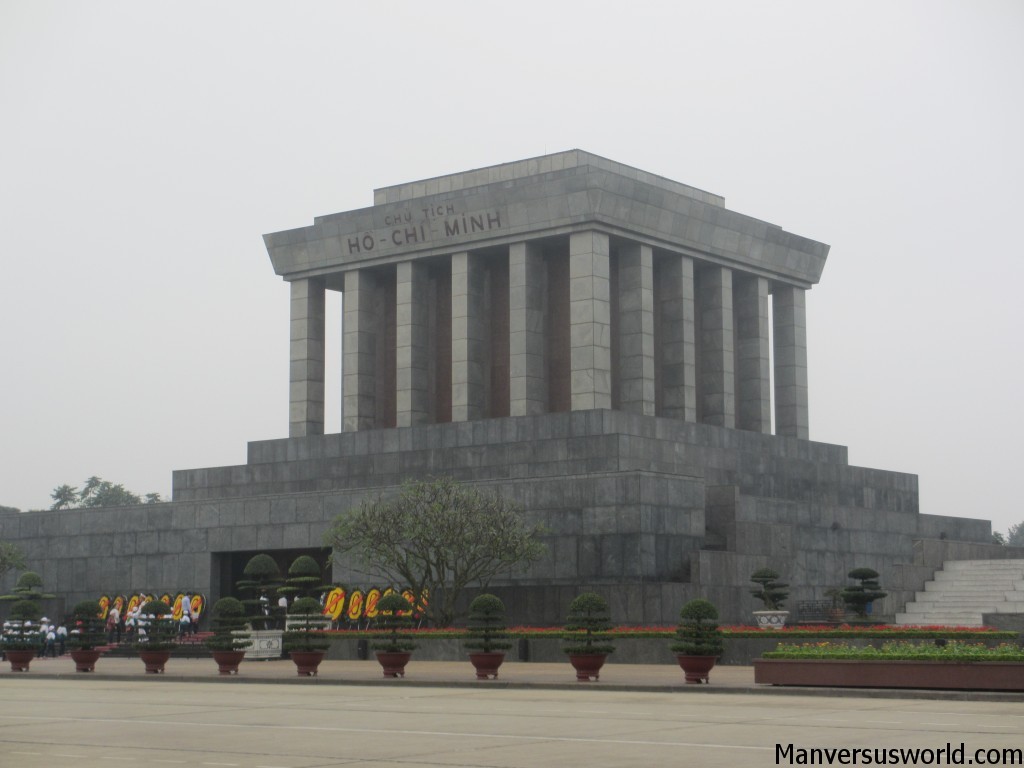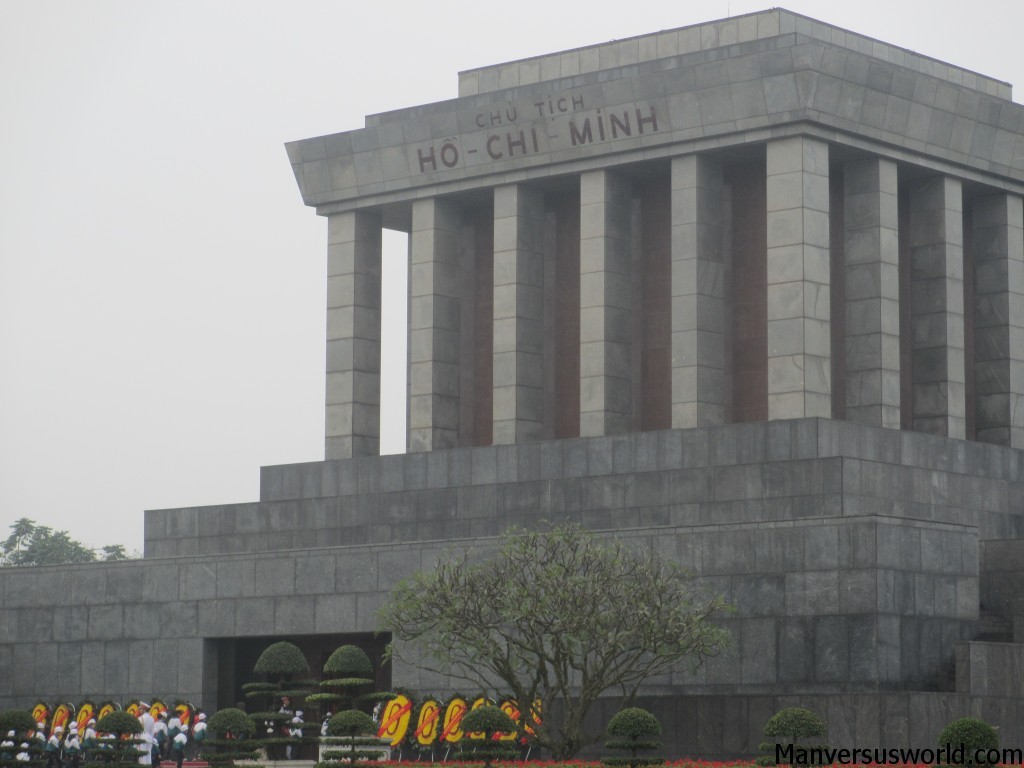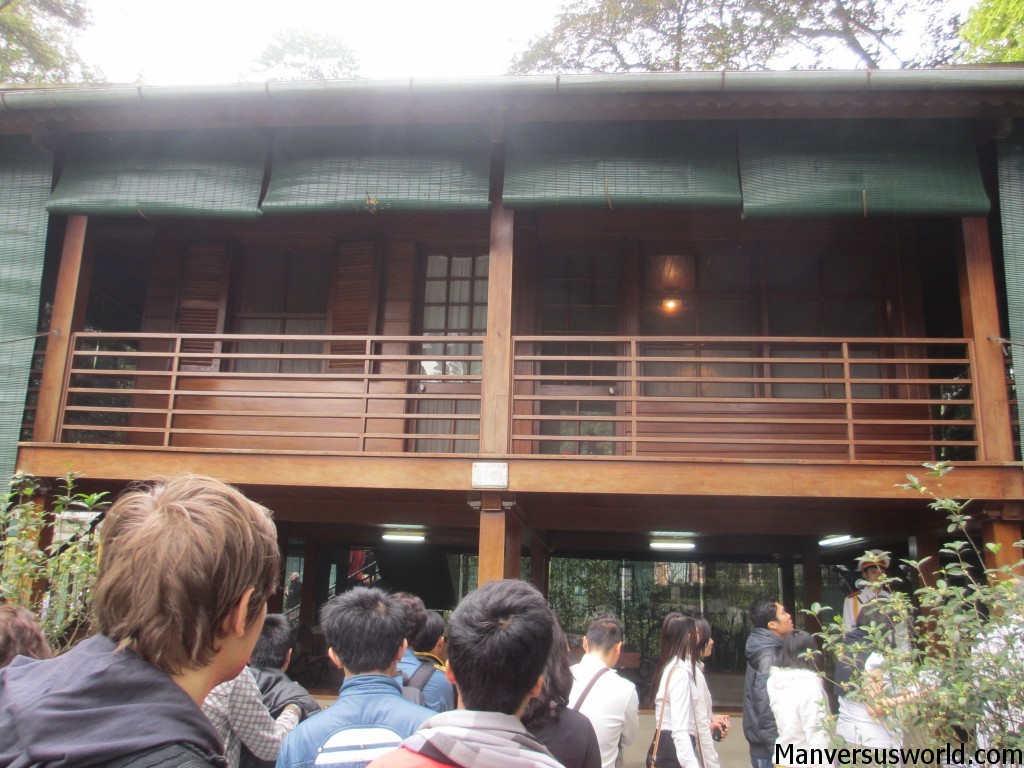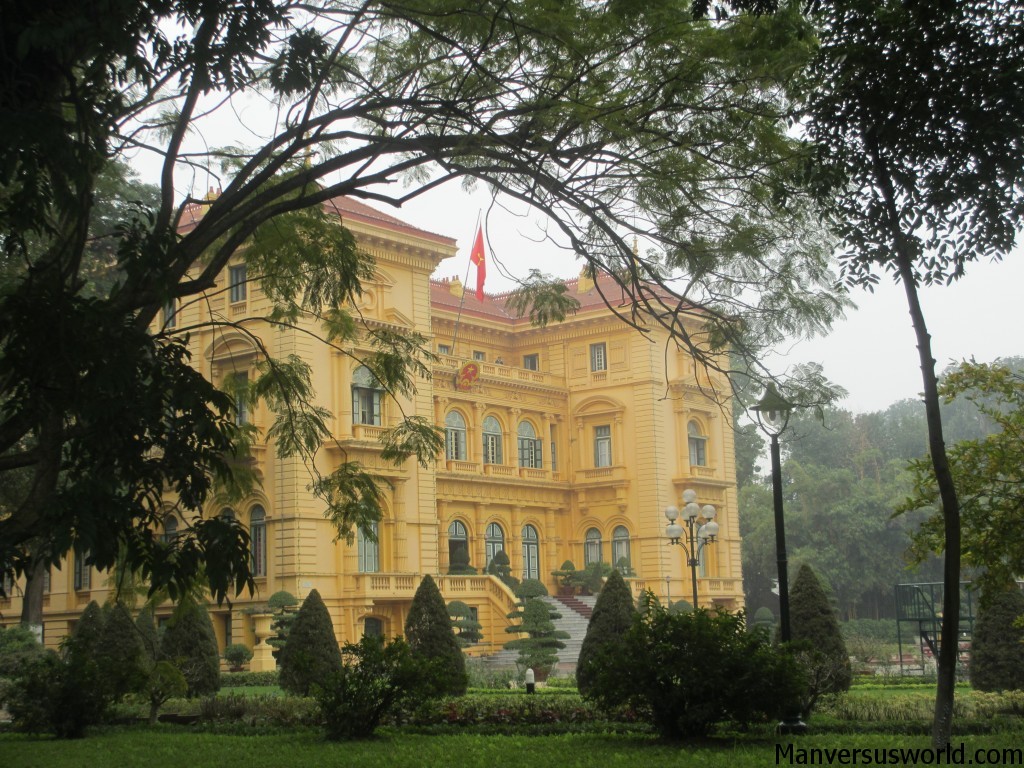Gruff military personnel strip you of your camera as you pass through a metal detector and join a long and somber queue. You slowly make your way past armed men with AK47s and bayonets at the ready and enter the stark and austere concrete building.
Here lies Ho Chi Minh, former prime minister and president of North Vietnam, champion of national liberation and, until his death in 1969, a key figure in the Vietnam War.
 It’s a bleak affair – but then what mausoleums aren’t? You shiver a little as you enter the air-conditioned chamber and go up a small flight of stairs. Joyless soldiers signal to the people in line to uncross their arms, take their hands out of their pockets and stop talking.
It’s a bleak affair – but then what mausoleums aren’t? You shiver a little as you enter the air-conditioned chamber and go up a small flight of stairs. Joyless soldiers signal to the people in line to uncross their arms, take their hands out of their pockets and stop talking.
And then you see him. In the centre of a large room adorned only with the single Vietnamese star and a Communist hammer and sickle, Ho Chi Minh lies under glass, well lit and flanked by four armed sentinels. He looks like he’s asleep, as though he might get up at any moment.
 “Uncle Ho” died from heart failure in his Hanoi home on 2 September 1969, when the outcome of the Vietnam War was still in jeopardy. He was 79.
“Uncle Ho” died from heart failure in his Hanoi home on 2 September 1969, when the outcome of the Vietnam War was still in jeopardy. He was 79.
The irony is that despite wishing to be created after death, his remarkably well-preserved body has been on display in the mausoleum at Da Dinh Square, Hanoi, since 1975.
Modeled after Lenin’s tomb in Moscow, the imposing granite mausoleum stands on the same spot where in 1945 Ho Chi Minh, as president of the Democratic Republic of Vietnam, declared the country’s independence from France.

The surrounding complex includes a Ho Chi Minh Museum, the presidential palace he refused to live in and the two simple homes he chose to live in instead – one on stilts and the other with a couple of his old cars still parked in the garage.
Entry to the mausoleum is free but entry to the presidential palace area costs 50,000 VND. The two homes – one he lived in from 1954 to 1958, the other from 1958 to 1969 – offer a unique glimpse into the life of this very iconic gentleman.
And if “iconic” sounds like an exaggeration, then you haven’t been to Vietnam. Ho Chi Min’s bearded mug adorns T-shirts, posters and banners all over the country, not to mention his is the face on the national currency.
New York Times writer Alden Whitman summarised Uncle Ho’s significance in his 1969 obituary: “Among 20th-century statesmen, Ho Chi Minh was remarkable both for the tenacity and patience with which he pursued his goal of Vietnamese independence and for his success in blending Communism with nationalism.”

In summer the Ho Chi Minh mausoleum opens from 7.30am to 10.30 am; in winter, from 5am to 11am. However, it’s closed from early September to early December every year for maintenance. The palace complex is open from 7:30am to 11am and 2pm to 4pm in summer; 8am to 11am and 1.30pm to 4pm in winter.

Nice piece. We’re heading to Hanoi in a couple of weeks. Can’t wait. Loved HCMC/Saigon, so looking forward to discovering the differences between the cities – I’ve heard they’re vastly different.
They are very different! I think the main difference is that Hanoi has all the backpacker stuff like hostels and bars all mixed in with the proper local shops and restaurants. I hope you enjoy it!
Great to read this. I saw Uncle Ho almost 20 years, from your description, its sounds like zero has changed 🙂
He still looks as though he could wake up at any moment…